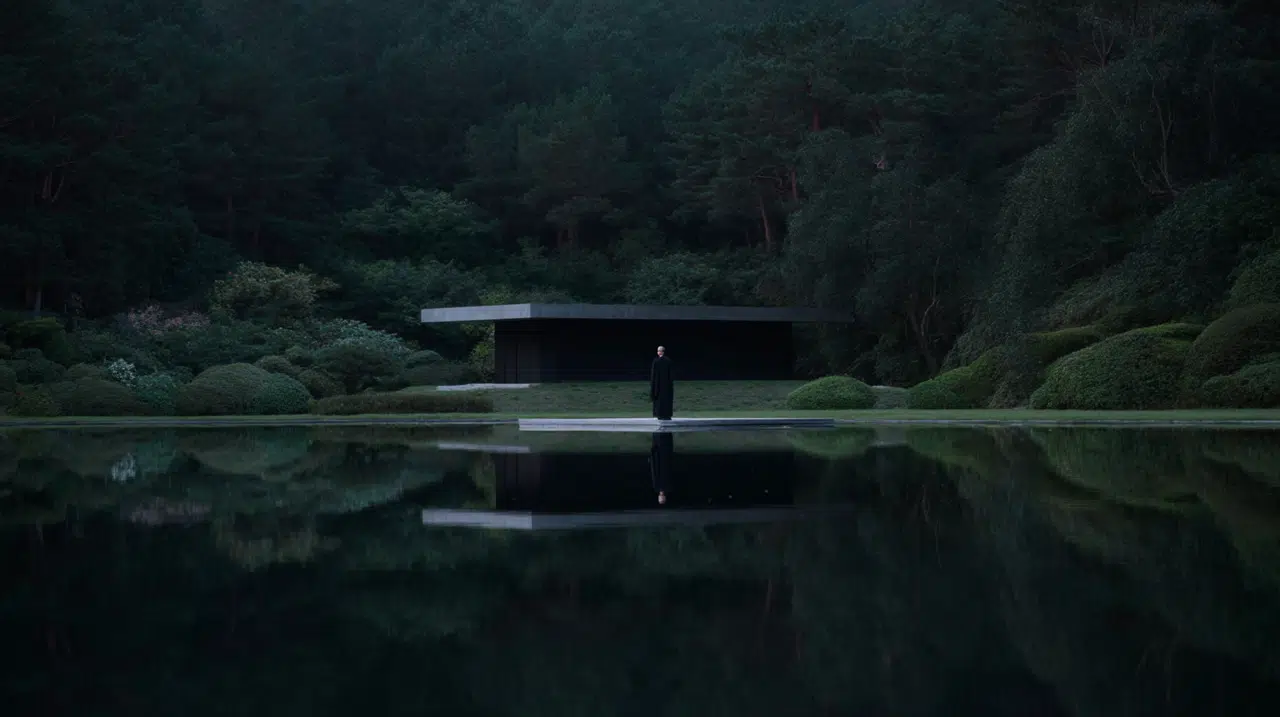
Every now and then, someone gets intrigued when I mention that Zen is a deep influence on my design work. It’s not something I advertise, but it always seems to resonate.
Zen isn’t something I actually “use” in my work. It shapes how I work quietly and deeply, without demanding much attention. It taught me how to notice before naming, how to stay with what doesn’t resolve and how to stop trying to fix what needs to unfold.
I didn’t seek it out intentionally. But over time it became unavoidable. In the kind of work I do, which includes discovery research, upstream strategy and systems sensing, there’s rarely a straight line from question to clarity. Zen didn’t offer an answer. It offered a posture. Wangjitsu, my design method, is where that posture became practice.
Letting go of fixed categories
Strategy often begins by defining the problem. But when you name something too early, you trap it in a frame that might not belong to it. Zen teaches the opposite: observe what is unfolding before you classify it.
In Wangjitsu, we resist the urge to impose structure on complexity. We don’t lead with models. We let the system speak for itself. That means working with messy edges, blurry movements and contradictory signals without trying to make them cohere too quickly.
Sometimes we never name the thing at all. We simply position around it.
Staying with the present
This is not about mindfulness. It’s about resisting projection. In strategic work, there is constant pressure to interpret quickly and to move toward coherence even when the field hasn’t stabilized. Wangjitsu holds back that impulse. The method is designed to stretch the moment before resolution. It keeps attention trained on what is actually happening, not on what we want to extract from it.
Staying present means remaining with contradiction, ambiguity, silence or resistance without needing to resolve it right away. That form of attention isn’t passive. It is active, sustained and often uncomfortable. But it’s exactly what allows deeper signals to surface. These are signals that can’t be accessed through premature synthesis or agenda-driven framing. Strategic clarity takes time. Rushing to understand flattens what needs to remain open.
Reframing through negation
The Zen concept of mu is a refusal. It is not an answer or a pivot. It is a way of saying: no. Wrong question. When a team is stuck choosing between two paths, we often ask whether the decision itself is misframed. Instead of negotiating between options, we challenge the structure that made those options seem inevitable.
This kind of reframing isn’t rhetorical. It opens space by clearing away noise. It shifts the situation from decision-making to meaning-making. That one move can change what becomes visible.
Valuing the unfinished
Most strategic processes are built around delivery: clean insights, final recommendations, clear direction. But clarity doesn’t always mean resolution. Systems don’t care about the structure of our reports. They move in loops, contradictions, reversals and unfinished sequences. In Wangjitsu, we make space for that reality. We recognize when something is not ready to be closed and we hold it open without anxiety.
The unfinished is not a lack of insight. It is a form of precision in systems where no stable endpoint exists. It keeps strategic thinking aligned with the complexity it’s reading. What gets framed as incomplete is often more truthful than what gets framed as finished. Choosing not to resolve something can be the most accurate response.
Working with contradiction
Contradictions in strategy are often treated as problems to fix. But in Wangjitsu, we see them as entry points. A contradiction reveals how a system protects itself. The gap between stated values and actual behavior, between intention and effect, between what is said and what is rewarded—these are not inconsistencies to smooth over. They are coordinates. They show us where to focus.
Contradiction also signals pressure. It reveals where the system is being asked to stretch, contain or disown something. These are not marginal zones. They are central. Treating them as signals rather than errors offers a more grounded view of what’s at stake. Not all contradictions can or should be resolved. Some must be held and studied. Some persist. The work is to read them, not rush to dissolve them.
Practice over application
You don’t “use” Wangjitsu. You train in it. It’s not a process to apply. It’s a method to inhabit. The more you practice it, the less visible it becomes. It reshapes how you listen, when you speak and what you choose to hold back. Timing shifts. Framing gets quieter. The system reveals itself because you’re not pushing it to perform.
This is not about developing a mindset. It is about practicing orientation, restraint and timing until they become intuitive. What looks like hesitation from the outside is often perception doing its work.
Relational thinking
Zen collapses the distance between observer and observed. Wangjitsu begins from that position. We are not neutral. We are not outside. Our presence affects what becomes visible. The way we frame, the way we move, the way we listen—it all enters the system. Pretending otherwise distorts the map.
A researcher who sees themselves as separate will misread what is relational. A strategist who believes they are objective will design a future that protects their own blind spot.
This does not make the work soft. It makes it more accurate. Zen didn’t give me a theory. It gave me a way to hold complexity without needing to dominate it.
Wangjitsu turns that into a method. It offers a way of working with unfinished systems, reading contradiction, noticing position and waiting without retreating. Some things only become visible when you stop trying to control them.
